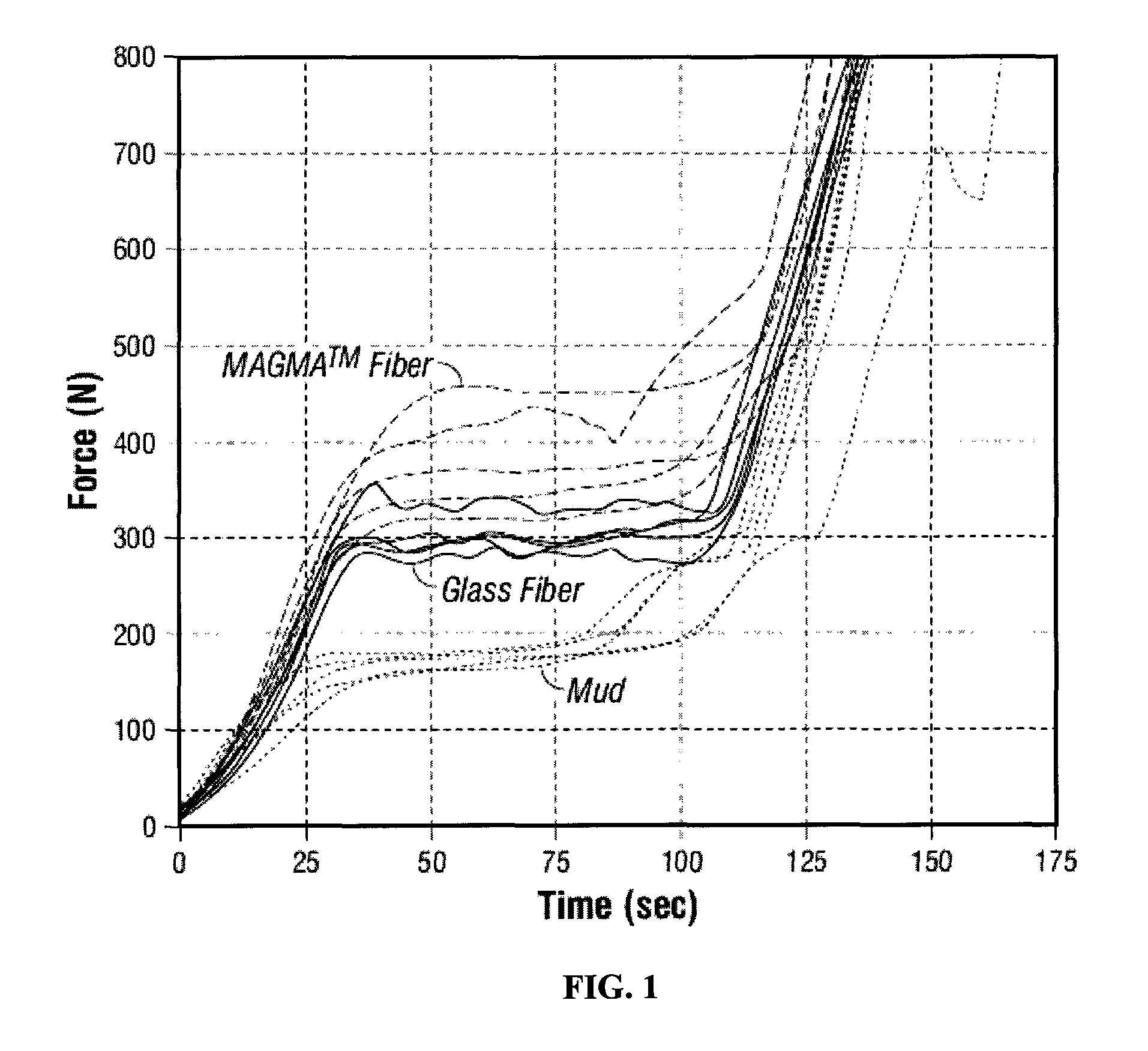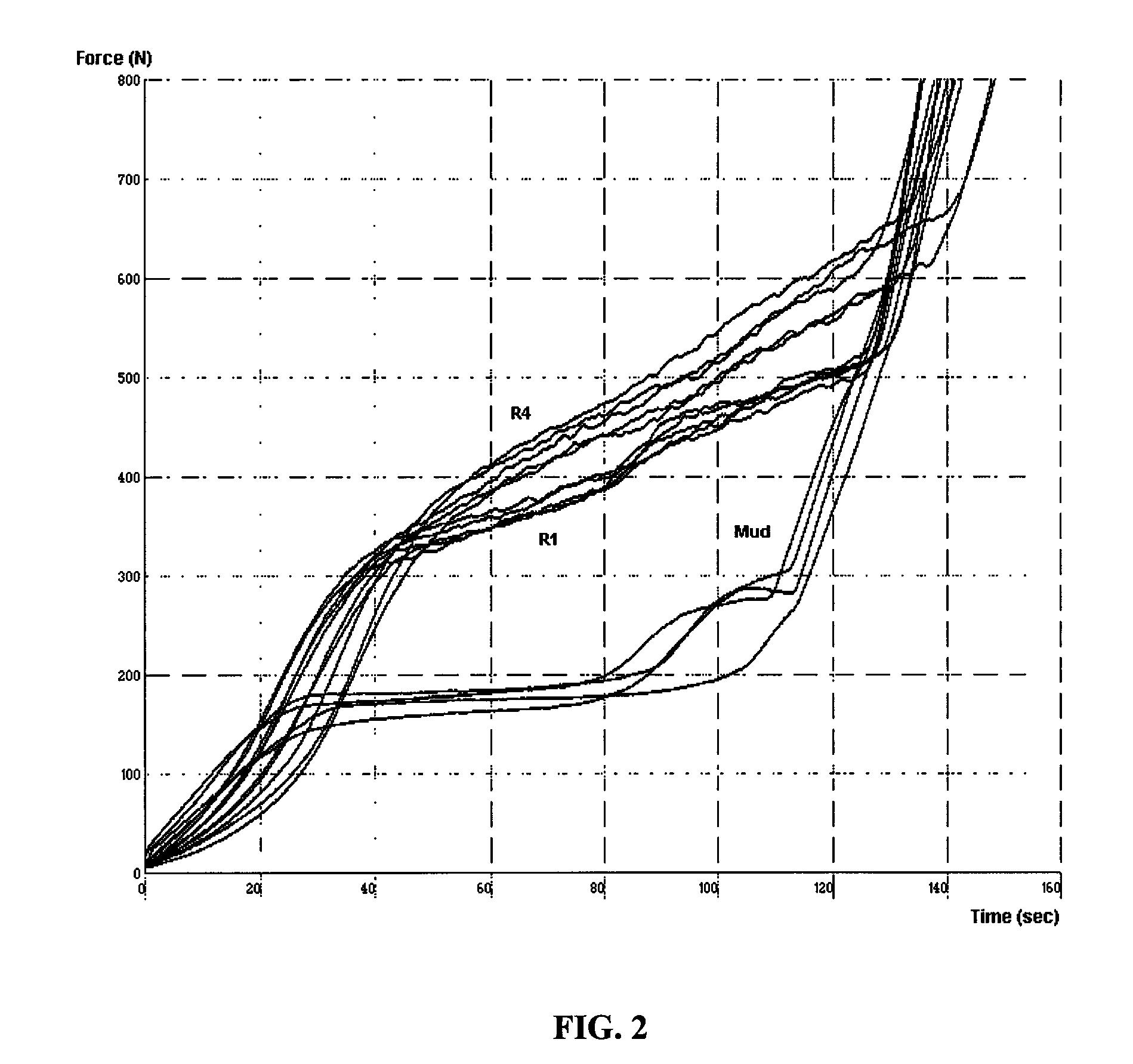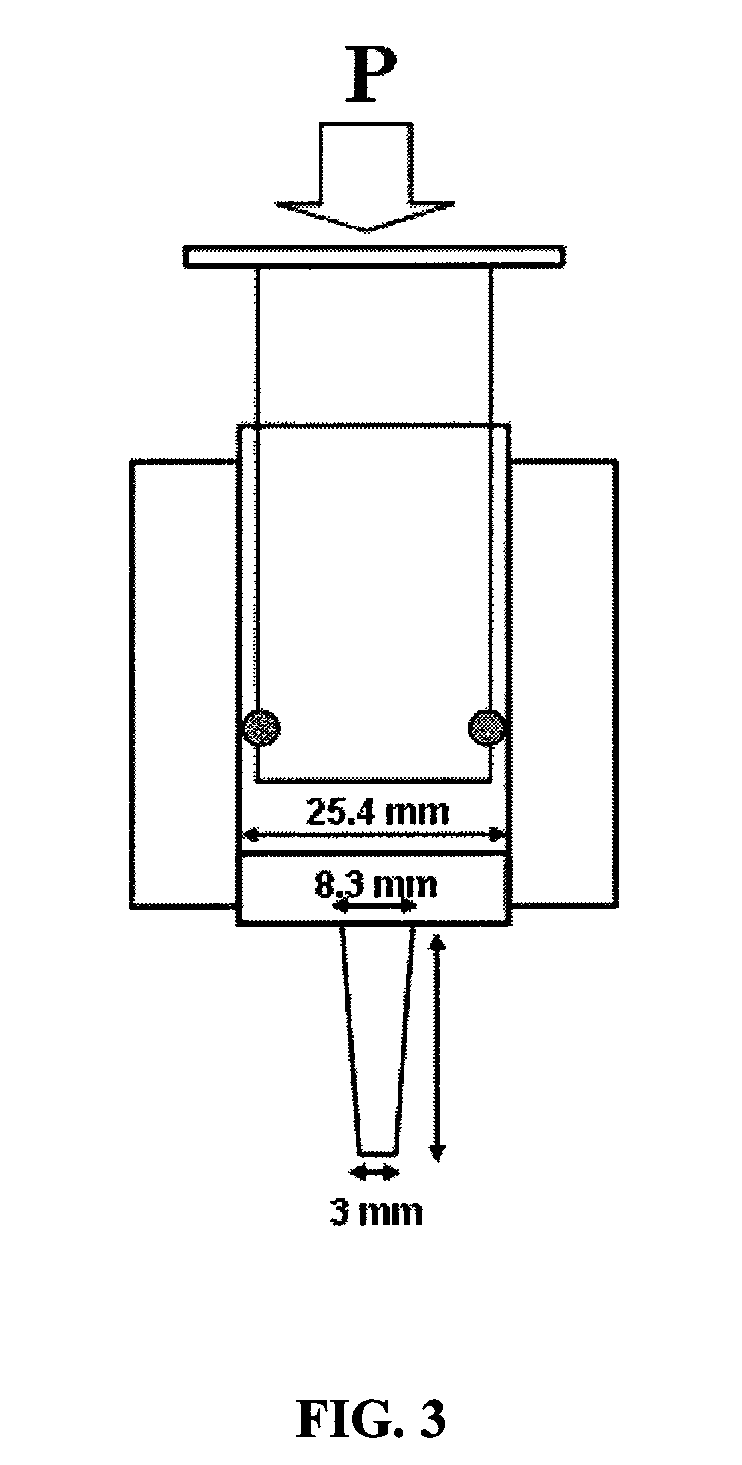Lost circulation material for oilfield use
a circulation material and oilfield technology, applied in the direction of sealing/packing, chemistry apparatus and processes, borehole/well accessories, etc., can solve the problems of reducing the service life of the drilling fluid, so as to and reduce the loss of circulation.
- Summary
- Abstract
- Description
- Claims
- Application Information
AI Technical Summary
Benefits of technology
Problems solved by technology
Method used
Image
Examples
example 1
Fibers
[0060]Mud cakes were made with this mud and with the addition of one or the other of two types of flexible fiber to this mud. The fibers used with this mud for preparation of mud cakes were glass fibers (about 20 microns in diameter) cut in the laboratory into approximately 1 to 2 mm lengths, and “regular” MAGMA™ fiber. The amounts of the MAGMA™ fiber and glass fiber added to the mud in two experiments were 14.98 and 14.27 kg / m3 (5.25 and 5.00 lb / bbl), respectively.
[0061]FIG. 1 shows the injection profile and the force required to inject mud cake samples, made from the bentonite mud with and without glass or MAGMA™ fiber, into a narrow tip. Mud cake made from the bentonite mud was injected much more easily into the tip than the mud cakes that contained fibers. The mud cake that contained “regular” MAGMA™ fiber required more force to be injected into the tip in comparison to the mud cake containing the glass fibers. The presence of different lengths of the MAGMA™ fibers (in the...
example 2
Rubber
[0062]Ground rubber was added to the same mud in amounts of either 1.38 weight percent or 7.61 weight percent (designated samples R1 and R4 respectively). When mud cakes were made with these two samples using the apparatus and method described above, the mud cakes contained about 6 and about 23 volume percent rubber respectively. The rubber used had about 10 percent by volume of particles smaller than about 92 to about 205 microns, about 50 percent by volume of particles smaller than about 288 to about 422 microns, and about 10 volume percent of particles larger than about 532 to about 748 microns. The rubber contained about 28 to 33 weight percent carbon black.
[0063]FIG. 2 shows the injection profile and the force required to inject mud cake samples, made from the bentonite mud with the two rubber contents into a narrow tip. Mud cake made from the bentonite mud was injected much more easily into the tip than the mud cakes that contained rubber. The mud cake that contained mor...
example 3
[0067]A blend of solid particles was added to the water-based mud. The blend of solid particles consisted of 47.14 weight percent coarse calcium carbonate having a particle size up to about 1200 microns, 7.86 weight percent rubber, 30 weight percent medium calcium carbonate particles having an average particle size of about 130 microns, and 15 weight percent fine calcium carbonate particles having an average particle size of about 10 microns (MIKHART™ 10 available from, M-I Swaco, Houston, Tex. USA). The blend was added to the mud in an amount of 18.54 kg / m3 (6.5 lb / bbl). After addition of the blend, the Solid Volume Fraction of the water-based mud increased to 5.1 percent.
[0068]To the water-based mud (containing the solid particles), was then added 3.20 kg / m3 (1.12 lb / bbl) polyvinyl alcohol fibers soluble in water at high temperature, half of which had a length of about 1.5 mm and half of which had a length of about 6 mm (KURALON™ WN8 fiber mixture available from Kuraray, Osaka, Ja...
PUM
| Property | Measurement | Unit |
|---|---|---|
| particle size | aaaaa | aaaaa |
| particle size | aaaaa | aaaaa |
| particle size | aaaaa | aaaaa |
Abstract
Description
Claims
Application Information
 Login to View More
Login to View More - R&D
- Intellectual Property
- Life Sciences
- Materials
- Tech Scout
- Unparalleled Data Quality
- Higher Quality Content
- 60% Fewer Hallucinations
Browse by: Latest US Patents, China's latest patents, Technical Efficacy Thesaurus, Application Domain, Technology Topic, Popular Technical Reports.
© 2025 PatSnap. All rights reserved.Legal|Privacy policy|Modern Slavery Act Transparency Statement|Sitemap|About US| Contact US: help@patsnap.com



